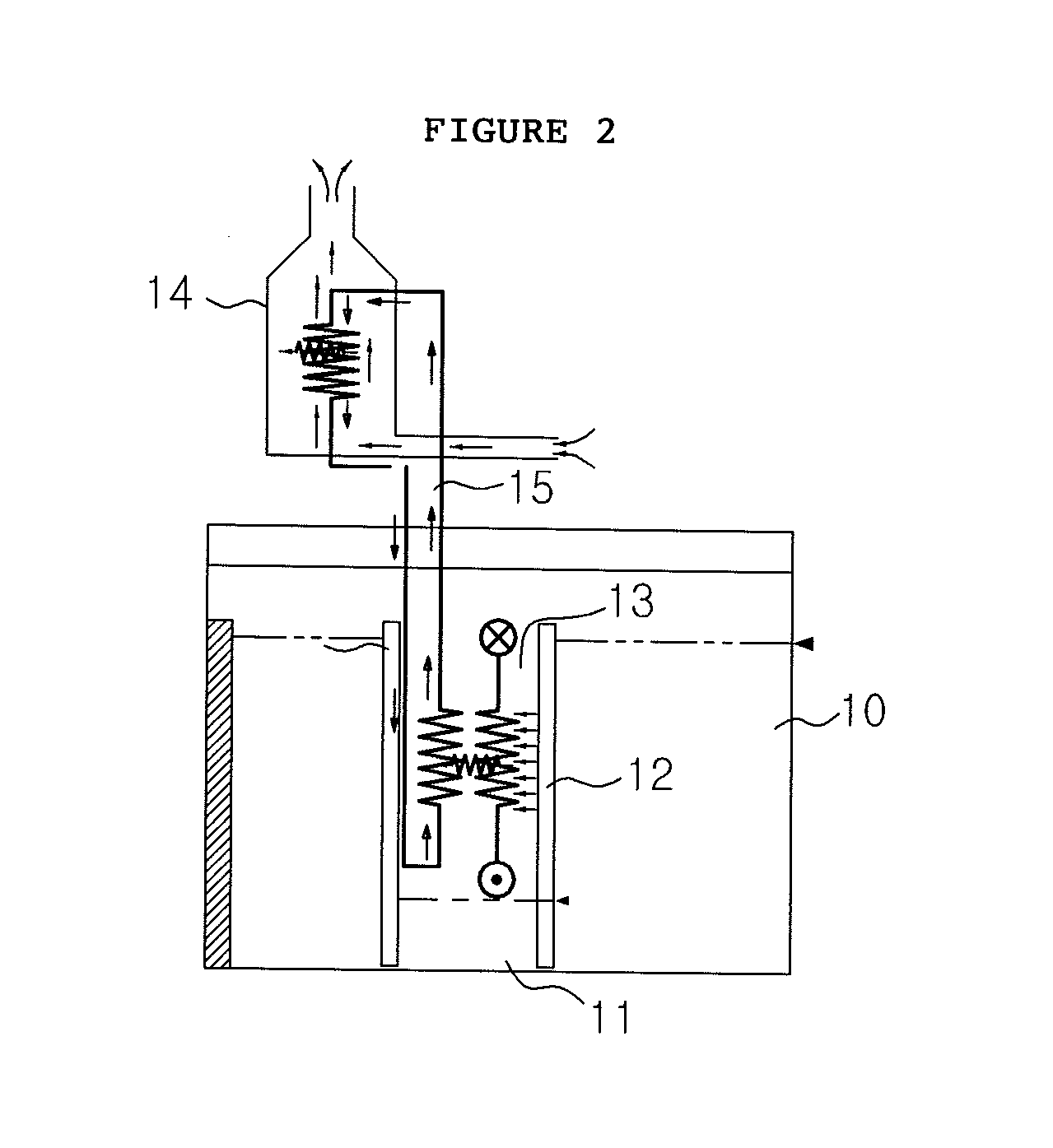Fully passive decay heat removal system for sodium-cooled fast reactors that utilizes partially immersed decay heat exchanger
a heat exchanger and sodium-cooled fast reactor technology, which is applied in the direction of nuclear reactors, nuclear elements, greenhouse gas reduction, etc., can solve the problems of not using an air flow control device, the temperature of sodium in the intermediate sodium loop is not sufficiently high, and the operational reliability of the safety system is significantly reduced, so as to reduce operational reliability and improve operating performance
- Summary
- Abstract
- Description
- Claims
- Application Information
AI Technical Summary
Benefits of technology
Problems solved by technology
Method used
Image
Examples
Embodiment Construction
[0038]Hereinafter, preferred embodiments of the present invention will be described in detail with reference to the accompanying drawings.
[0039]FIG. 3 is a cross-sectional view showing the configuration of a sodium-cooled fast reactor having applied thereto a fully passive decay heat removal system 100 according to the present invention, and FIG. 4 schematically shows the configuration of a fully passive decay heat removal system 100 according to the present invention.
[0040]As shown in FIGS. 3 and 4, the fully passive decay heat removal system 100 according to the present invention comprises: a hot pool 120 having received therein hot sodium heated by a nuclear reactor core 120; an intermediate heat exchanger 112 which heat-exchanges with the sodium of the hot pool 120; a cold pool 130 having received therein cold sodium cooled by passage through the intermediate heat exchanger 112, the cold pool being isolated from the hot pool 120; a support barrel 140 extending vertically through...
PUM
 Login to View More
Login to View More Abstract
Description
Claims
Application Information
 Login to View More
Login to View More - R&D
- Intellectual Property
- Life Sciences
- Materials
- Tech Scout
- Unparalleled Data Quality
- Higher Quality Content
- 60% Fewer Hallucinations
Browse by: Latest US Patents, China's latest patents, Technical Efficacy Thesaurus, Application Domain, Technology Topic, Popular Technical Reports.
© 2025 PatSnap. All rights reserved.Legal|Privacy policy|Modern Slavery Act Transparency Statement|Sitemap|About US| Contact US: help@patsnap.com



